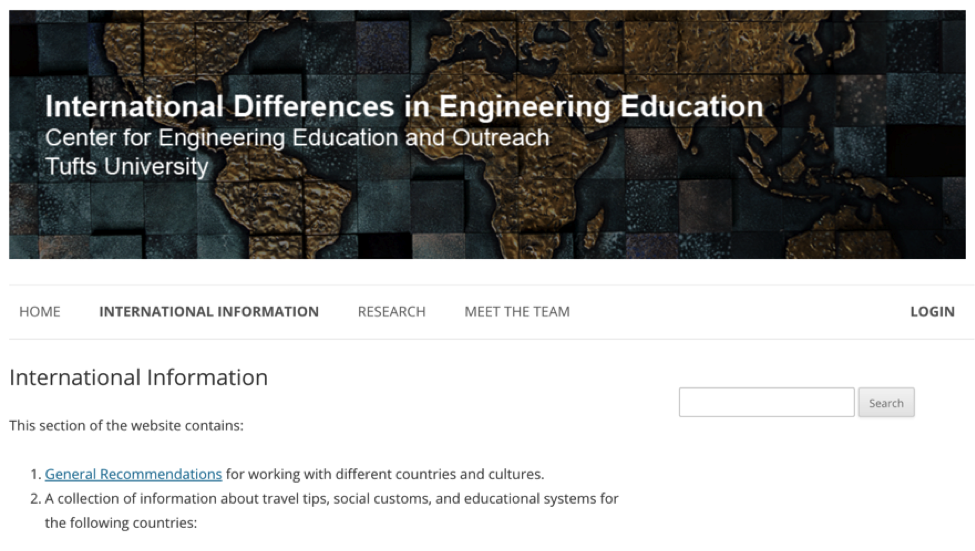by Aaron Johnson, Post Doctorate Research Associate
The impact of the CEEO reaches far beyond the boundaries of metropolitan Boston. The CEEO has hosted students, postdocs, faculty members, and visitors from Switzerland, Korea, Chile, Spain, and China, among others. Members of the CEEO have also traveled internationally to work with partners in countries such as Indonesia, Germany, Japan, Russia, Australia, and New Zealand. Because of our global reach, it is important for the CEEO to understand how ideas and motivations about engineering, technology, and engineering education are similar and different around the world. The approach to engineering education that is successful here in Boston may not be successful in another part of the world. As a result, having this cultural understanding of engineering education can enable the CEEO to effectively work with our international partners to introduce our programs and activities into their countries. Marya Schnedeker, a staff member at the CEEO and alumnae of Tufts, Camille-Louise Mbayo, an undergraduate student in mechanical engineering, and I undertook a CEEO Innovation Fund project focused on international engineering education that addressed these themes.

Our first task in this project was to interview CEEO students, faculty, visitors, and partners about their experiences traveling abroad for CEEO activities or the educational system in the country outside the US where they grew up. These interviews provided us with information about Austria, Chile, China, Germany, Japan, Rwanda, and Spain. Marya and I also contributed our experiences visiting the Navajo Nation of the Southwestern United States, which has a unique and different culture from the rest of the country. These interviews gave great personal insight into the challenges and opportunities that CEEO members have encountered in other countries. From these interviews, and our own experiences, we developed a list of general recommendations for working with different countries and cultures. The full list can be found on our project’s website (http://international.tuftsceeo.org), and includes recommendations about understanding different cultures; communicating with teachers, students, and other partners; and approaches to engineering education. And of course, we highlight a key finding that many of our interviewees mentioned—kids are kids everywhere.

Beyond these recommendations, we designed our project website to assist members of the CEEO as they prepare to travel to a new country. Camille compiled commonly needed information for a number of countries, including details about travel visas, required vaccines, electrical outlets, social customs, and the structure of the educational system. All of this information is publicly available, and we welcome you to refer to it before you travel abroad!
The website also contains an internal site only accessible to members of the CEEO. Here, we provide edited comments from our interviews, which allow others to view the interviewees’ personal insights into other cultures and educational systems. There is also a place for members of the CEEO to submit trip reports, which give a brief description of where they went, the activities they did, and the local contacts they worked with.

The final portion of the project—which we did not fully complete—was to survey teachers around the world about their attitudes towards engineering and technology education. We modified the existing Design, Engineering and Technology Survey, as it has been validated in prior studies. This survey has the same aim as our research—to assess K-12 teachers’ perception of design, engineering, and technology and familiarity teaching these topics. We selected a sample of questions, slightly modified and expanded upon them, and had the survey translated into six languages. We conducted a pilot study with two teachers from the U.S. and Spain, but unfortunately did not have enough time to send the survey out. We believe that the survey will provide valuable information about international differences in engineering education, and we hope that an interested CEEO student will take up this thread of research in the future.
For more information about our project, we encourage you to check out our website at http://international.tuftsceeo.org. There, you can find information about travel to eleven countries in Africa, East Asia, Europe, and South America, as well as a description of our survey and the research we pursued.

